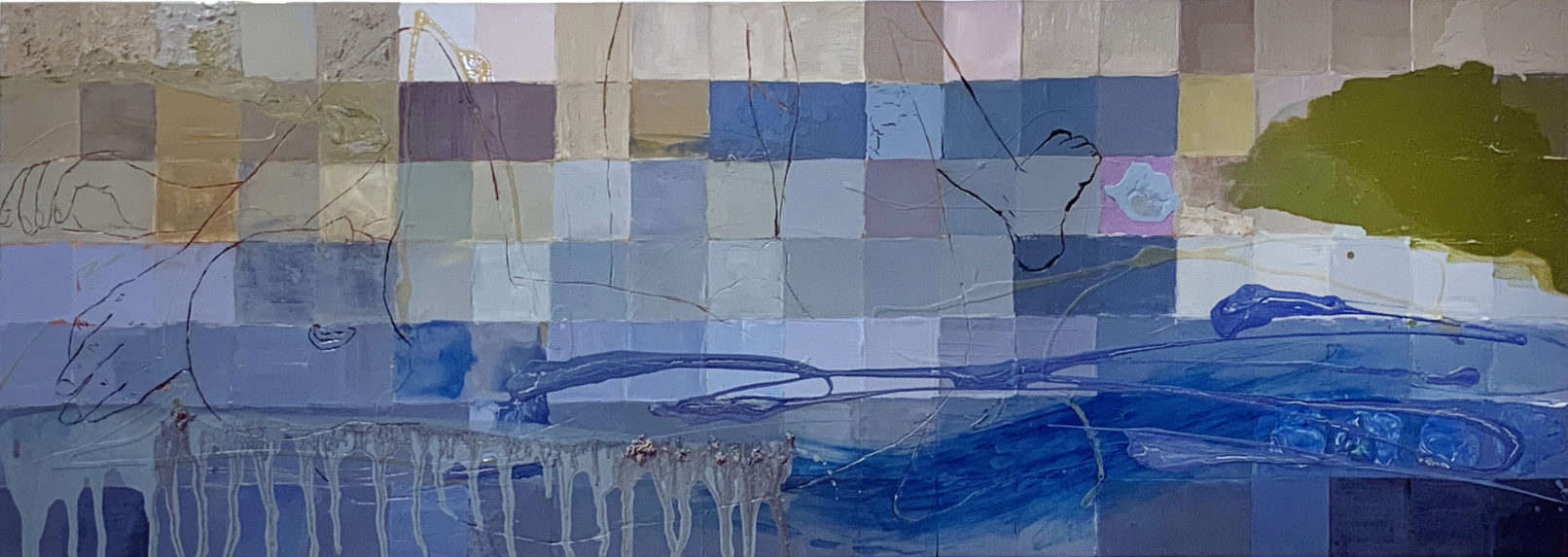Rewilding: The River
2021, work completed during artist residency at Tempe Center for the Arts, Tempe, Arizona
work developed during residency at Tempe Center for the Arts
Rewilding: a form of conservation and ecological restoration that aims to improve biodiversity and ecosystem health by restoring natural processes and wilderness areas; reconnects people with the natural world and helps communities thrive.
We are human; we are a part of the natural world. My art practice is focused on human embeddedness in the natural world and the interconnectedness of living organisms. I work across disciplines, including video, sound, sculpture, and painting. The focus of my residency at Tempe Center for the Arts was reconnecting with the lived and direct experience of nature as perceived through observation and documentation of the Salt River and the artificial lake, Tempe Town Lake, created out off the dammed Salt River (Rio Salado).
Tempe Center for the Arts is housed in a beautiful building, perched alongside Tempe Town Lake and just at the edge of the western dam that controls the lake. The lake has been a huge finical boon to the city of Temp, as it is now ringed with gleaming office buildings and condominiums. Valley residents use the lake daily, for boating and fishing, and for walking the perimeter paths. Yet, this lake is so artificial, dammed on both ends by large mechanical structures and bollards. Just adjacent to the lake runs a creek, a true part of the river, a small flowing creek where dragon flies and turtles live, and the river bed is dense with small shells from the region’s ancient past. The history of the Salt River and its importance to the indigenous peoples of the area is a fascinating story and without this original ancient canals, it is unlikely that Phoenix would be the city it is today. You can read additional information about the canal system here.
What I found compelling about my location during my residency was the tension between the man made environs and the natural world, and my struggle to interpret, and reunify, the two.
I started my residency by doing research on the canal system, collecting historical maps drawn by early settlers as well as more recent developers, all intent of claiming and taming and naming the water. I studied the history of the Salt River Project and the damming of the rivers, hiking and paddling the canal and river system, and meeting with archeologists who study the ancient peoples of the desert and meeting with archeologists at Pueble Grande.
Part of my preparation was documenting the colors of the water and picking up odds and ends along the canal system. I looked for small “nature items” floating in the lake, representations of the natural world that live in the artificial lake. By taking photos of the water every day, I tried to copy the colors that I saw, paying close attending to the changes the water showed me. After I had taken many photos, I created a grid that included all of the colors that I saw and had paints mixed up to match each color. My project started then in reality. I carved a sleeping figure into a wood plank, I thought of him as a metaphor for the sleeping river, like the Greek river god Hydaspes, resting under the dammed lake. Once my studio was set up at TCA, I gridded my panel to match my color plan and started filling in the squares with the colors I had photographed, digitized, computer matched and had mixed….layers and layers of mediation away from the actual river right in front of me. It took me a week of “filling in the the squares” to understand that my process was completely divorced from my intent of reuniting a natural experience with a mediated experience. Humans, we are obtuse. So, I changed my plan, and every moment I was at the center I carefully observed the shifting colors of the water and mixed up little batches of paint to try to match it. I added these bits of paint to my panel and gradually covered up my river god with the colors of the water, alive at the moment. The finished piece is “The River 146”.
I worked on two other large panels while in residence at TCA, and these developed along the same path. “Unmaking” is also a carved wood panel which includes scraps and tracings of the many maps that have been drawn to the region and my collections of natural objects that ended up on the shore of the lake. I think that this is a work in progress. The final piece I worked on, “Black Water”, also a carved wood panel, decedents and meditates on the water at night and the reflections and darkness that surrounds the development. the area of the lake is commercially vibrant, but there is an unease about the lake, many unsheltered individuals make their homes under the bridge adjacent to the lake, and the buried history of the ancient peoples, the unattended ruins overlooking the lakes and the oddity of a desert city with a lake at its economic center are the silent center of the piece.







































